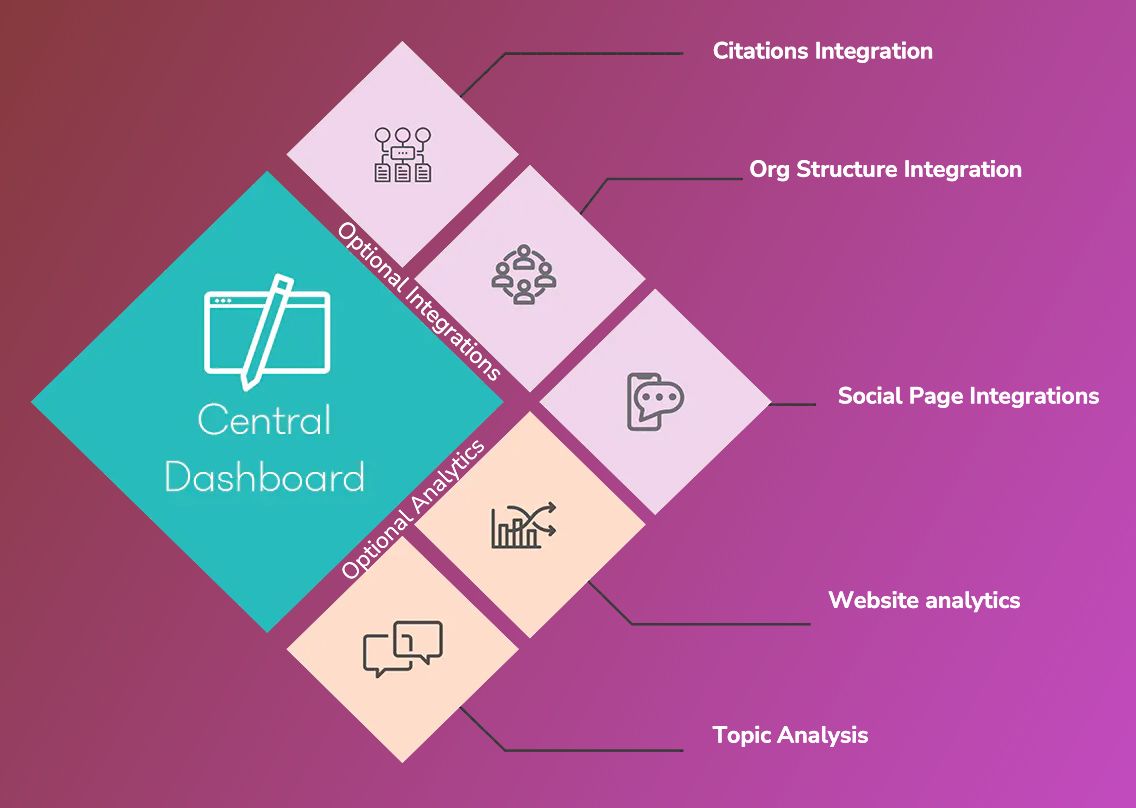Turning Reputation Management Into a Competitive Advantage
Establishing a Competitive Advantage through an integrated approach to marketing, communications, and technology in higher ed.

Reputational prestige is perhaps a university's most competitive asset, often overshadowing the quality of the education itself at times. And in a world where online conversations are seemingly constant and new avenues of digital transformation are popping up left and right, effective, 360-degree reputation management is becoming more important than ever.
The challenge is: reputation isn’t a single task fix and universities face a set of unique challenges compared to that of other organizations. It takes true ownership of your brand’s digital footprint (across departments), requires an integration of the correct technologies, and an investment of marketing budgets and strategies.
The key to unlocking reputation management as a point of competitive advantage for your university boils down to two important foundational elements:
- A more integrated, cross-departmental approach to marketing and communications
- A sound awareness of your brand perception, across departments, and that of your competitors
The Cross-Departmental Challenge: The Whole is Not Equal to the Sum of Its Parts
One of the most prominent challenges facing universities is the disparate departments - all of which encompass their own goals, budgets, KPIs and even target audiences. For marketing and communications teams, this means mastering the juggling act of tracking different metrics and KPIs for different stakeholder groups. At the university level, the focus might be promoting the brand with a focus on recruitment. At the department level, it might be developing recognition for subject matter expertise to attract research funding.
Even if marketing and communications teams have perfected this, the challenge then becomes breaking through the online noise surrounding your university and attributing it to the correct department. Prospective students, current students, parents, donors, and faculty - all distinct target audiences that higher education teams find themselves catering to on a regular basis. Each of these groups have different needs and therefore different conversations online, all of which influence your brand’s online reputation.
The result of this: siloes have really become the biggest blocker to higher ed teams, which inherently impacts reporting, tech stacks, and the efficacy of programs.


Reputational prestige is perhaps a university's most competitive asset, often overshadowing the quality of the education itself at times. And in a world where online conversations are seemingly constant and new avenues of digital transformation are popping up left and right, effective, 360-degree reputation management is becoming more important than ever.
The challenge is: reputation isn’t a single task fix and universities face a set of unique challenges compared to that of other organizations. It takes true ownership of your brand’s digital footprint (across departments), requires an integration of the correct technologies, and an investment of marketing budgets and strategies.
The key to unlocking reputation management as a point of competitive advantage for your university boils down to two important foundational elements:
- A more integrated, cross-departmental approach to marketing and communications
- A sound awareness of your brand perception, across departments, and that of your competitors
The Cross-Departmental Challenge: The Whole is Not Equal to the Sum of Its Parts
One of the most prominent challenges facing universities is the disparate departments - all of which encompass their own goals, budgets, KPIs and even target audiences. For marketing and communications teams, this means mastering the juggling act of tracking different metrics and KPIs for different stakeholder groups. At the university level, the focus might be promoting the brand with a focus on recruitment. At the department level, it might be developing recognition for subject matter expertise to attract research funding.
Even if marketing and communications teams have perfected this, the challenge then becomes breaking through the online noise surrounding your university and attributing it to the correct department. Prospective students, current students, parents, donors, and faculty - all distinct target audiences that higher education teams find themselves catering to on a regular basis. Each of these groups have different needs and therefore different conversations online, all of which influence your brand’s online reputation.
The result of this: siloes have really become the biggest blocker to higher ed teams, which inherently impacts reporting, tech stacks, and the efficacy of programs.

Establishing A Competitive Edge
If universities are able to integrate their approach across departments, they can then begin focusing on gaining a true competitive edge at both a regional and international level not only for student recruitment but also retention, fundraising and more.
Academic reputation is perhaps the most important element of establishing a competitive advantage, but it takes, at the very least, a twofold approach to master: 1) understanding how your coverage varies across departments and competitors and 2) knowing the types of content worth promoting to effectively get in front of the right people to inform their decision making process.
Over the last decade, there are two higher ed trends that go hand in hand with this scenario. The first of which is the growing importance of institutional rankings (which nowadays, is often directly intertwined with reputation) and the second is establishing an international profile to build status and credibility. As a result of this, we often see admissions teams relying on marketing and communications to seek out information on which departments are attracting international students from the desired markets or how their media coverage compares to that of competing universities.
With these, it’s important for universities to decide which indicators are of greatest interest in accordance with their strategic priorities. It’s then important to map what types of content have a direct impact on these indicators and the decision making processes of their prospective students, donors or other target audiences.
Fortunately for higher ed teams, monitoring and tapping into these types of insights are becoming easier, but scaling these efforts and reporting on them across departments can be the bigger challenge.
The good news? With the right tools and a partner that understands the higher education landscape, you can stay on top of the data, level up your media strategy, protect how your organization is perceived, and draw in students from around the world.

Meltwater’s University Solution
For over 20 years, Meltwater, a leader in media and social intelligence, has been a strategic partner to higher education marketing and communications teams. Recognizing the need for a more centralized and integrated solution to address the challenges unique to high ed teams, Meltwater recently launched its new University Solution. The solution’s modular structure means marketing and communications teams can tailor the solution and receive real-time insights that address their specific priorities and challenges.
With a modular structure in place, Meltwater for Universities can be configured to a university’s exact needs with options spanning:
- Organizational Structure - A module designed to radically simplify the process of attributing media coverage to the correct parts of your organization across departments, colleges, institutes, incubators and faculty members.
- Social Media - A single destination for reporting on your social media marketing activities across key social platforms like Facebook, Twitter, Instagram and more.
- Citations - Analyze how research citations impact media coverage, web traffic and social media engagement to aid in your efforts to acquire funding, attract students, and increase industry engagement.
- Topic Analysis - This module helps universities uncover the conversational themes happening about your organization and competitors to fuel content and promotional strategies.
- Owned Media - A dashboard for measuring the impact of your owned media by measuring the resulting web traffic, media pick up and social media engagement.
If your university is facing similar challenges as outlined above, don’t miss out on the opportunity to better understand how Meltwater’s University solution can be a step in the right direction for the 2022-2023 school year. To receive a complimentary and customized demonstration, simply get in touch with us here.
This sponsored content is written and provided by Meltwater. The editorial staff of Inside Higher Ed had no role in its creation.


